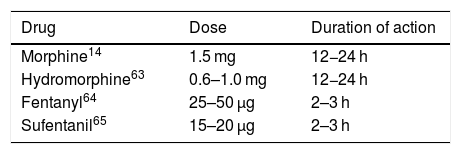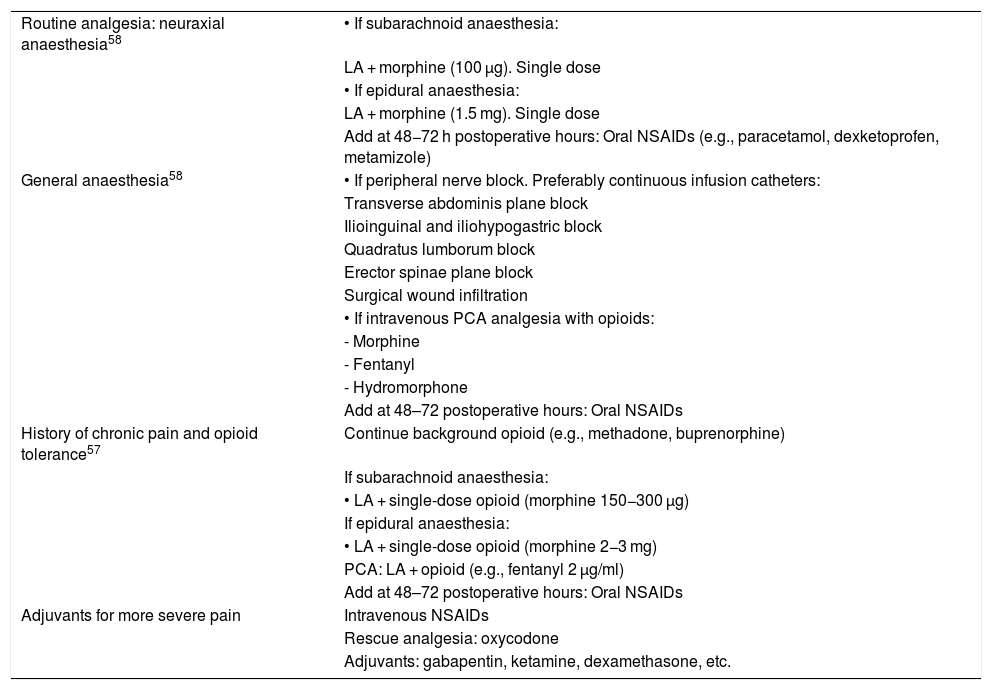The number of caesarean sections performed worldwide is increasing, and with it, the need for the optimal analgesia strategies. Deficient postoperative analgesia increases the need for opioids, delays recovery, and is associated with chronic pain and postpartum depression. It is essential to find good postoperative pain control strategies that facilitate early mobility, early recovery, and early hospital discharge with minimal side effects on the mother and infant.
Multimodal analgesia based on neuroaxial anaesthesia with morphine in combination with non-opioids such as non-steroidal anti-inflammatory drugs and paracetamol, gives the best post-caesarean analgesia outcome, and allows anaesthesiologists to reserve opioids, corticoids, gabapentin, magnesium or ketamine for situations where neuroaxial anaesthesia cannot be performed, for high-risk patients, or when pain is difficult to control. Peripheral nerve block techniques can also be added, such as transverse abdominis plane block, erector spinae block, or continuous wound infiltration.
El número de cesáreas que se realizan en todo el mundo es cada vez más frecuente. Por tanto, para estas pacientes resulta crucial ofrecer las medidas analgésicas más óptimas. Una deficiente analgesia durante el periodo postoperatorio está asociada con altas necesidades de opioides, la recuperación más tardía, el dolor crónico y la depresión postparto. Es fundamental encontrar estrategias que faciliten un buen control de dolor postoperatorio para facilitar la movilidad, la recuperación de la parturienta y el alta más precoz, ocasionando mínimos efectos secundarios sobre la madre y el recién nacido.
La analgesia multimodal basada en anestesia neuroaxial con morfina, junto a fármacos no opioides como los antiinflamatorios no esteroideos y el paracetamol, forman la mejor combinación analgésica tras la cesárea. Esto permite limitar el uso de opioides, corticoides, gabapentina, magnesio o ketamina para los casos donde la anestesia neuroaxial no sea posible, se incrementen los riesgos, o también cuando la mujer padezca un dolor de difícil control. Además, existe la posibilidad de añadir bloqueos periféricos, como por ejemplo el bloqueo transverso de la pared del abdomen, el bloqueo del plano erector del espinal o infiltraciones de la herida quirúrgica.










